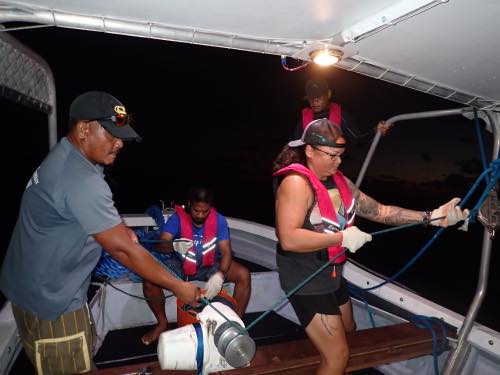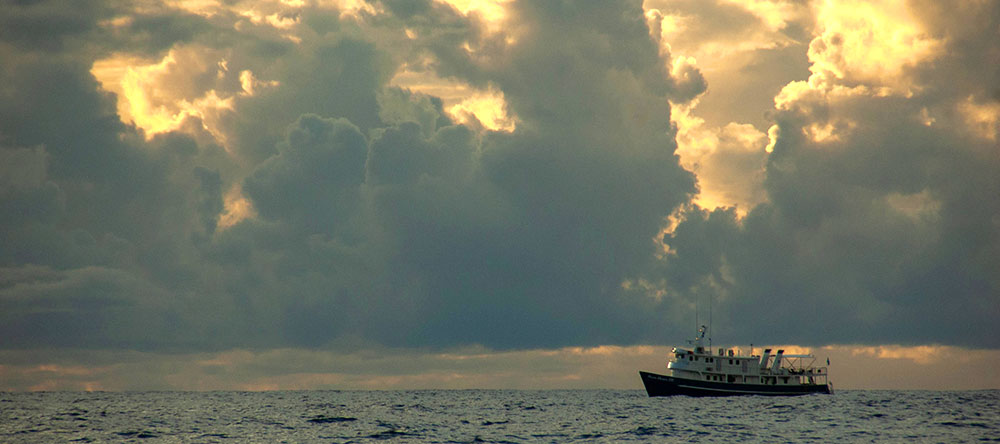- Research
PICRC researchers conduct two-week research cruise to the PNMS
Researchers from the Palau International Coral Reef Center (PICRC) have returned from surveying the Palau National Marine Sanctuary (PNMS) using baited remote underwater videos (BRUVs). The work, carried out in October, aims to investigate the biodiversity, abundance, and distribution of species in Palau’s offshore environment.
“Palau’s offshore environment is much less studied than the well-known nearshore environments,” said PICRC researcher, Dr. Louw Claassens. “This research cruise into the PNMS is among our initial efforts to study and understand the PNMS.”
The PNMS starts 24 nautical miles offshore. It’s a particularly deep and unexplored region, with depths of thousands of meters in certain areas. It’s an important site for pelagic species like tuna, billfishes, sharks, rays, whales, and dolphins.
The researchers selected three zones within the PNMS—one in the north, another in the west, and the third in the south—and aimed to sample from four sites within each zone. Their plan was to deploy the BRUV, an 800m string with five cameras attached, each 200m from the next, three times at each site. However, due to restrictions caused by bad weather, they took samples from eleven of the sites, though not three times at every site, as initially planned. The set of cameras was baited to draw in the pelagic animals, while recording for two hours. This allowed the researchers a glimpse of the top 10m of the ocean and should provide a baseline understanding of the pelagic fish that live in or migrate through the area.

Over the next few months, the videos will be analyzed. An initial check showed a large amount of mahi-mahi and oceanic triggerfish in the PNMS. In the future, this work will also contribute to a comparison of data between different management zones.
While in the PNMS, the researchers also investigated the diversity, abundance, and distribution of tuna and billfish larvae. To do this, they used plankton nets to look at the top 50m. They towed these nets across each site during both the day and night.

The research team consisted of Dr. Louw Claassens, Dr. Piera Biondi, Greta Sartori, Christina Muller-Karanassos, Ikelau Otto, McQuinnley Mesengei, Victor Nestor, Hadley Renguul, and Lyvonsky Tatebe.


